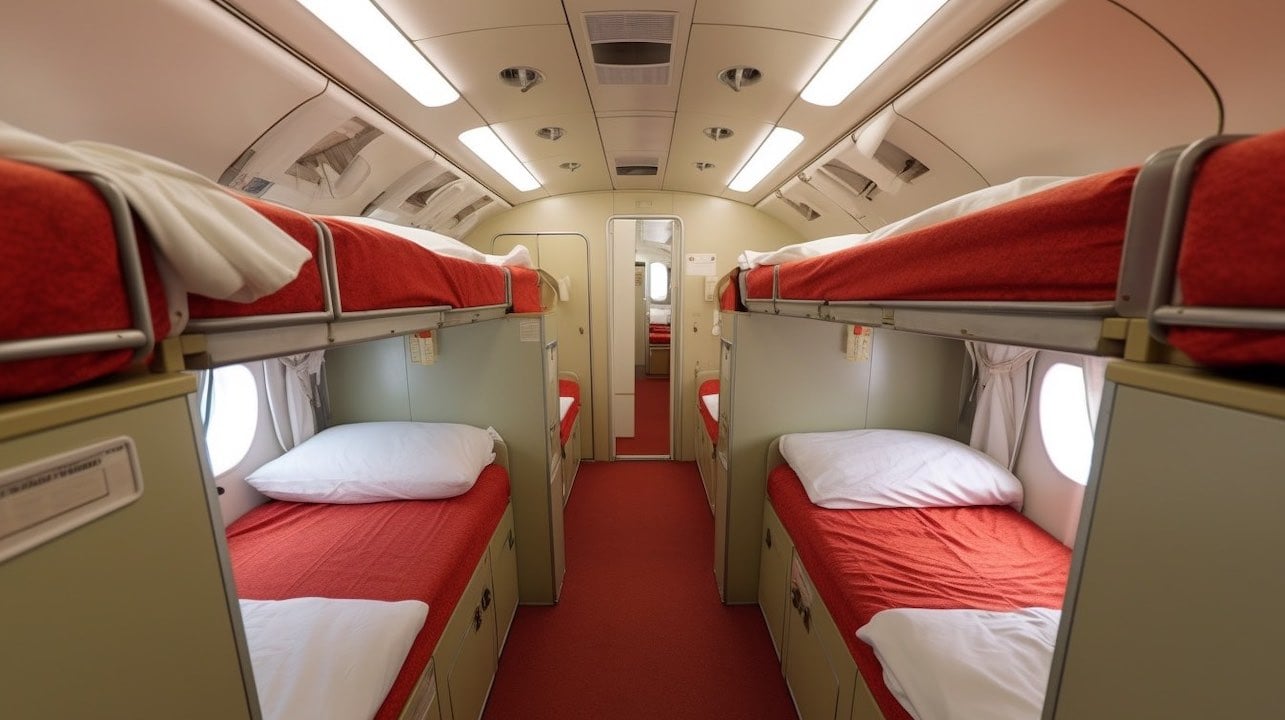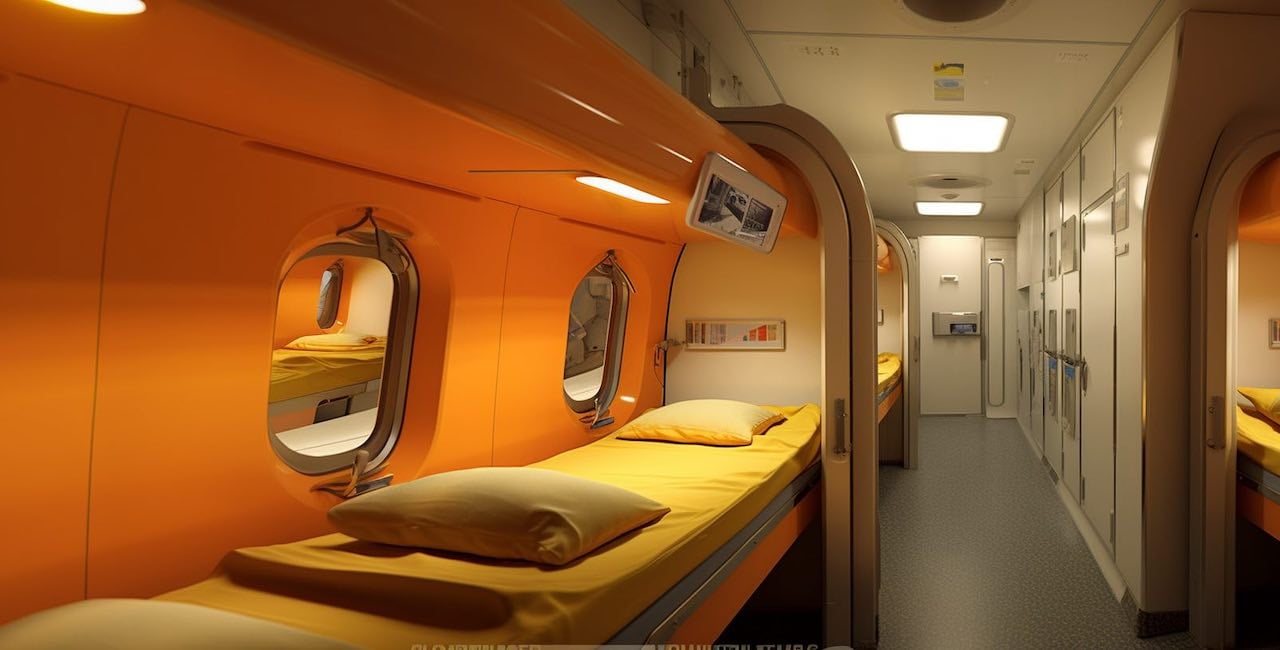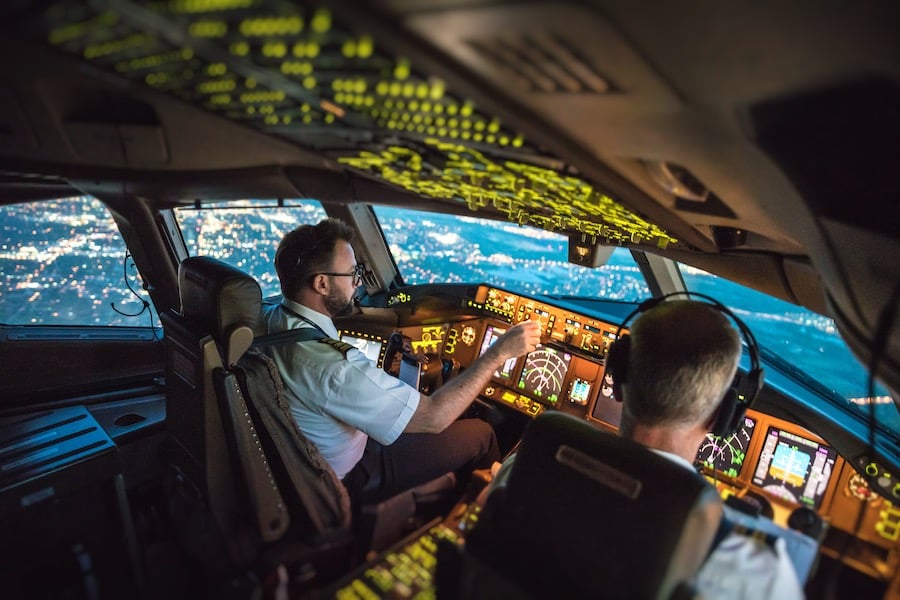Perhaps you’ve ever wondered where flight crews go to relax on those seemingly endless journeys. Where do they find refuge to recharge their batteries between shifts on long haul flights?
Today we’re opening the doors to this open secret: the crew sanctuary, the aircraft rest areas. Will you join us?
Safety comes first
Thanks to cutting-edge aerospace technology, we have the ability to fly non-stop for an impressive 16 hours. This fact, combined with increasing global interconnectedness, means that transoceanic flights last an average of 12 hours.
But what about the crew? They have to remain vigilant whether passengers are sleeping and having sweet dreams or are up at night. But on the other hand, they also need to be relieved by other colleagues to rest and not make mistakes in the air.
Rest to work better
Did you know that fatigue is one of the most significant risks to flight safety? A flight crew member or pilot can be fatigued without showing obvious signs of exhaustion. In such circumstances, our abilities are impaired.
For this reason, both the Spanish and European authorities have established strict regulations for the rest of flight personnel. In Spain, the regulation in question is Operational Circular 16-B.
This regulation delimits the maximum period of activity of a pilot, which can be up to 13 hours. But be careful, this period starts to count from the moment the employee arrives at the airport of origin.
Pilot relief, the great ally
An important figure is the “Pilot Relief“. This additional pilot takes over while the main pilots take a break. But not to worry, these professionals are equally qualified and prepared to keep the flight safe and comfortable.
However, this change of pilot does not take place on all flights, only on very long flights. Pilots, on continental or domestic flights, do not need pilot relief in ordinary conditions.
Although the duty period can be up to 13 hours, most airlines incorporate pilot relief in advance to avoid over-fatigue in pilots and cabin crew. In addition, rest also helps to mitigate jet lag. If you want to know more about jet lag, we suggest you take a look at the post where we explain the causes and how to prevent it.
What would we do without the flight crew?
Because flight crew are essential in aviation. Every measure that is taken with regard to employees, safety and time is done in order to ensure maximum comfort on the flight.
But it’s not just about ensuring a smooth flight, rest is a right and a well-deserved reward – aviation professionals are true heroes!
We hope you enjoyed this article and that you have learned a little more about the work of flight attendants. If aviation is your thing and you want to learn more about it, follow our aviation blog.





